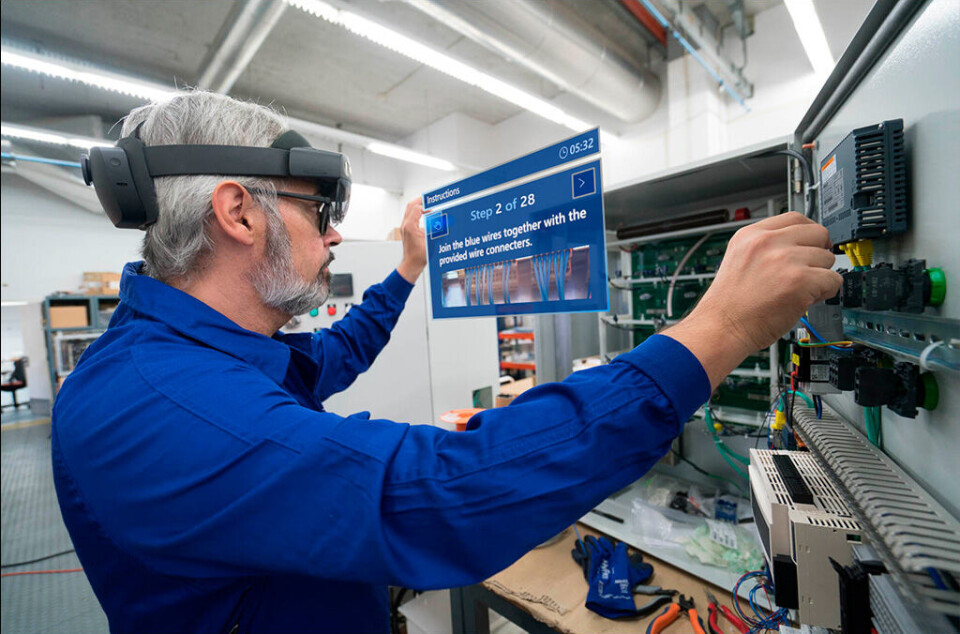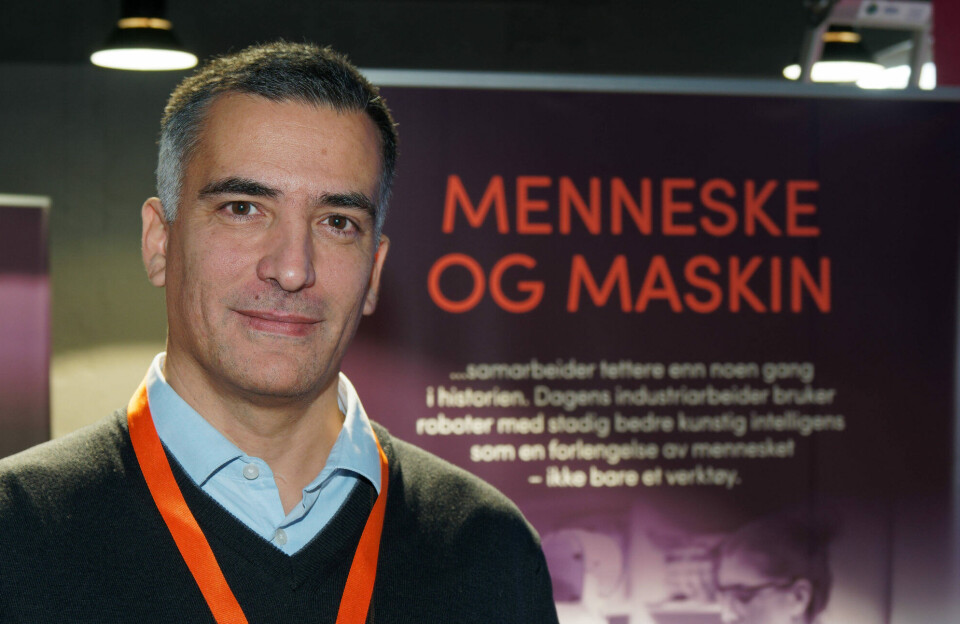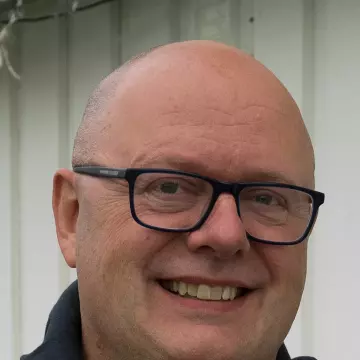THIS ARTICLE/PRESS RELEASE IS PAID FOR AND PRESENTED BY SINTEF - read more

These smart glasses show you the instruction manual right before your eyes
They first tell you what to do, then check that you’re doing it right, while constantly making sure that you aren’t getting too tired. Future aircraft are among the products that will be manufactured with the help of this innovative Norwegian technology.
Research carried out in Trondheim has led to the launch of a new company in both London and Lisbon. The results will now contribute to industrial production all across Europe.
“It all began when SINTEF received funding for a project to look into technologies that would improve the performance of operators on the factory floor,” Manuel Oliveira says.
Anyone can be a ‘skilled’ production worker
Oliveira is general manager at the company KIT-AR. He and his colleagues are using the results of many years of research to produce practical aids for industry.
They have been working on everything from industrial robots to bathroom furniture. However, first in queue are aircraft manufacturers, who are very interested in this new technology.
KIT is the name of the software integrated into a technology called HoloLens, otherwise known as digital glasses. The glasses combine images and film projected onto the inside of the lenses with what you see in the real world outside them. The abbreviation AR stands for ‘augmented reality’.
In practice, this means that a factory operator can put on their glasses, look around and receive instructions about how to collect components and assemble them in the same way as a qualified skilled worker, even if the person in question is not immediately familiar with the task in hand.

A simple problem with an advanced solution
Aircraft manufacturers Airbus were among the industrial partners funding the initial research project. Oliveira reminds us that building an aircraft is complicated business: Subcontractors are scattered across the world, and assembly can take several months.
“I will never forget a conversation I had with some Airbus representatives. They told me that they had what was a very simple problem, but which was very difficult to solve,” he says.
The companies make plans and delegate tasks to individual workers on the factory floor. Then something happens, for example, at one of the subcontractors. Consequently, they have people available who cannot perform the work as planned.
“An operator may have the skills needed to work somewhere else in the factory, but he or she may not be familiar with the task at hand at the new location. This is how it all started,” he says.
Training right before your eyes
Researchers at SINTEF noted that there were shortcomings on many issues, not least the availability of expertise exactly where and when it was needed.
They found out how the glasses could be used to provide step-by-step training to an operator. The glasses provide directions, and the operator completes the task precisely as instructed.
“The next thing we observed was that there was no system providing feedback about the work performed. Operators didn’t know when they were making errors,” Oliveira says.
This can be addressed using sensors and microphones that check that everything is being completed correctly, send notifications if an error is made, and instruct the operator as to what must be done differently.
“We can also measure body temperature and breathing. This enables us to find out how stressed and tired an operator is becoming,” he says.
Technology on human terms
All information handled by the glasses can be adapted to the individual operator. Those who have completed the same task multiple times need less information than those learning to do something new. Too much information is also stressful.
“It’s all about preventing errors. Production is important to a functioning society, and the individual must be the focus of industrial development. Production has to be more sustainable. If we can avoid making errors, there will be less wastage of materials and energy,” Oliveira says.
Currently, KIT-AR employs 17 people in the UK and Portugal. The first company to purchase the system was a car manufacturer, and installation begin in March this year.
“We’ve been doing very well so far, and have lowered the bar for the use of AR,” he says.
Taking research into the real world
Manuel Oliveira is pleased to have an effective support mechanism behind him as he takes his research out into the real world.
“SINTEF TTO understands that it takes many years to get things established,” he says.
TTO stands for Technology Transfer Office, and Oliveira is referring to the company set up to commercialise the results of research carried out at SINTEF.
“When someone like Manuel Oliveira and his team come to us with an idea, a concept, a technology, and a mass of skills and expertise, we sit down with them and see how we can work together. Normally, it takes three years before we decide that a technology is worth investing in. The main criterion is that we can call it a technology for a better society," Inge Hovd Gangås says.
Gangås is an investment manager at SINTEF TTO and has been working closely with Oliveira during the launch process for KIT-AR.
Trondheim and London
SINTEF TTO operates with several investment funds. In the case of KIT-AR, a similar fund based at the University College in London also offered funding, together with a number of London-based investors.
“The first step is to establish that what the researchers have been working on is in fact a real problem in need of a real solution. Then we have to look at how big the problem is and what the solution might be," Gangås says.
He explains that a given problem may have more than one solution.
"How unique is our solution? Do we have patent rights, software, or the highly specialised skills and expertise that will enable us to be the first in the market?” he says.
In this case, the process developed quickly. The problem really is big and the solution unique. Nevertheless, investors have to be aware that what they are investing in will not be on the market for some years yet.
‘Supercharging’ the workers
“It’s early days for KIT-AR, but things look promising so far. The company has had a commercial installation in operation for well over a year, and that is very positive. But it is sale numbers two and three, and then numbers nine and ten that will determine if a company succeeds,” Gangås says.
He adds that the company has received a very good response to its technology.
“I’m very pleased with what it’s doing. Errors are frequently made when people are involved in a process, wherever they may be. In this case, the technology quickly puts people in a position to perform all kinds of tasks. It’s all about supercharging the workers,” he says.
See more content from SINTEF:
-
How Svalbard is becoming a living lab for marine restoration
-
New study: Even brand-new apartments in cities can have poor indoor air quality
-
Fresh hope for patients with chronic inflammatory bowel disease
-
Testing a giant ship: May take five kilometres to stop
-
A robot is helping researchers hunt for the best cancer warriors
-
Locomotives that run on diesel can be electrified






































